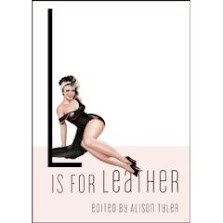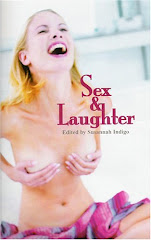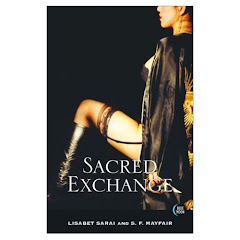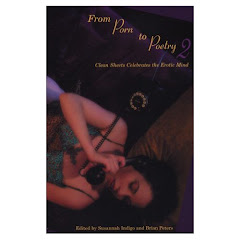In art classes, students are often asked to draw the naked human form. The fact that the body is naked makes it a greater challenge than if it were clothed. Clothes are easier to draw and they set the body in a social context: social status, period, personal taste. Clothes would have allowed the students short-hand ways of sending a message via their painting.
The naked body is difficult to draw. We are programmed quickly to spot oddities in the human shape so the artist has take care to get the proportions of the body right or we will be distracted or unconvinced. The artist also needs to decide on what they are doing with this naked body: making a photo-accurate copy? Trying to capture the spirit of the sitter? Drawing attention to particular attributes of the body itself? Making the body into a more abstract statement, a thing of shadow and light that starts from the human form but reaches outwards towards something more spiritual?
I think that, for those of us who are trying to learn to write, the equivalent challenge to drawing the human nude is to write beyond what we know. By doing this, we remove the props that produce easy prose – local colour, stereotypical characters, well established conventions for interaction that we can present without having to analyse.
For those of us who are trying to learn to write erotica, this challenge becomes the challenge to write beyond our own erotic experience. This might be done by writing from a different gender or by writing about a sexual orientation other than your own or by writing about a fetish or kink that you have no experience of.
I’m going to focus on writing about the relationship between dominants and submissives but what I’m about to say could equally apply to any sexual demographic: gay, lesbian, bi, old, age-gap, plushy, necrophile, dog-lover etc.
The first step in this exercise is to put superficial realism to one-side. No one lives life the way it is in books. Books describe only those things in a life that are of use to the story, yet most of us stagger through our days besieged by details and much of the time we only understand what the storyline was after the event. That's why books are so much better than life. It's also why reading (and writing) is ultimately less important than living.
So your task as a writer is to pull out those things in the Dom/sub relationship that make it what it is, to help your readers to identify with that world, to make your characters unique and human and credible, and yet keep the focus on the act(s) of dominance and submission that are the launch-pad for the story.
How do you do this when you have no personal experience of the Dom/sub scene?
Some writers might do this via research. But this is like dressing the nude before you write about it – it doesn’t really help you to get closer to the inner truth of the story.
I suggest that you start with questions that will help you apply your imagination to understanding and conveying what you see when you look at the nude in front of you. Try the following:
Why do Doms behave the way they do in the Dom/sub relationship?
How much control do they have?
How much does being a Dom define who they are?
How successful (or unsuccessful) are they in integrating this into the rest of their lives?
What was their first time like?
What is sex like now?
What is it in this behaviour set that is absolutely essential to satisfying the motivation that drives them to the behaviour?
How has that changed over time and why?
What do they look for in a partner and why?
How do they find it?
What makes them ashamed or afraid?
What would they decline to do?
What makes them proud?
What makes them feel more complete?
Are sex and love cohabitants in this person's life or do they have different addresses?
As you play with these questions and the answers they produce, reach into yourself. Make the story about you even if it is not about your actual experience.
Start of by telling a story about your first time in a Dom/sub relationship. Given that you personally have not spent much time tying someone up and hitting, flogging, pinching, biting, twisting, and waxing them until they cry with pleasure and relief starting at the beginning makes our task easier.
Imagine you've found a woman who you know wants you to be dominant when you have sex. What is the Dom’s reaction?
If he has to stretch his to figure out what is required of him then he’s not going to be a convincing Dom. He is trying to be something he’s not in order to please his lover. This is almost certainly doomed to failure – like most passions, this one is hard to fake. So the challenge of the story will be the gap between will and performance, desire and intent, and the extent to which the participants in the relationship will acknowledge that it and they are failing.
If, on the other hand, the woman’s desire to submit awakens a hidden or suppresses desire or one that has been surfacing for some time but remained unnamed and un-acted upon then how the does the would-be Dom feel? He might feel gleeful and afraid at the same time. It doesn’t matter that fear isn't part of the porno paint-by-numbers BDSM story play book. What matters is whether his anxiety resonates with you and your readers and whether it helps to move the story forward.
So how does our novice Dom get started?
She's waiting. He ties her up because he knows she wants that and because it is expected but he immediately understands that this is a preliminary not the act itself. What urge surfaces in his mind then? What is the thing that he is going to do that he wouldn’t normally let himself do? Hit her? Fist her? Force something into her? Slap her with his cock?
And how does it feel FINALLY to let yourself do that?
What have you learned about yourself?
What have you learned about her?
And what if she liked it and you didn't? Or you did and she didn't?
And so on and so on
The purpose of these questions is to explore the emotional reality of a sexual act.
Graphic, hard-core sexual images are used in erotica for quick warmth, to light the fuse of the story. Emotional realism is what gets beneath the skin of the reader and stays in the mind after the initial heat has subsided.
II recommend the BDSM section of the Treasure Chest of the Erotic Readers and Writers Association as a source for Dom/sub stories that have this kind of emotional realism.
Check it out and see which stories resonate and then ask yourself:
Why do they resonate? Because they sound real? Because you'd like them to be real? Because the confluence of restraint and release, desire and fear, dominance and submission, pain and pleasure captures the existential defiance inherent in a sexual act that, for a while at least, stems the entropic tide of universal decay? Or because it gets you from hard to soft in the shortest possible time?
What are the writers paying attention to? The mechanics of this toy and that knot? The gynecological detail? The taboos being broken? The slap of leather on Willow (or whatever her name is)? The nature of the relationship between D and s?
In one way or another, most of these writers are trying to get beyond threadbare formulas and pantomime characters to an emotional reality that drives the behaviour of the people in their stories.
And therein lies the challenge of writing beyond what you know: the opportunity to tell old truths in new ways.
Writing beyond what you know lets you step out of your skin and into someone-else’s.
If you can do that successfully, then there is a strong likelihood that your readers can follow your footsteps.

















